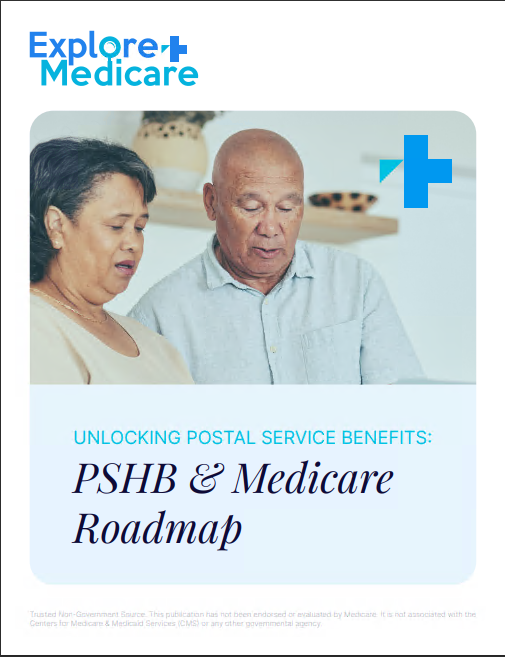Key Takeaways
-
The standard Medicare Part B premium has increased to $185 per month in 2025, reflecting higher healthcare costs and projected program spending.
-
Income-related adjustments can push monthly premiums significantly higher, making it essential to understand the tiers and how your 2023 tax return affects what you pay now.
The 2025 Part B Premium: What’s Changed
Medicare Part B premiums are not static. They adjust annually based on projected healthcare costs, beneficiary use, and changes in federal spending priorities. For 2025, the standard monthly premium for Part B is $185—an increase from $174.70 in 2024. The annual deductible has also gone up, now standing at $257 compared to $240 the previous year.
This increase might seem modest at first glance, but the ripple effect on your budget can be significant, especially if you’re managing fixed retirement income.
What Your Premium Covers
Your Medicare Part B premium contributes to coverage for essential medical services, including:
-
Physician visits and outpatient care
-
Durable medical equipment
-
Mental health services
-
Preventive screenings (such as mammograms and colonoscopies)
-
Home health services
While Part B is a core component of Original Medicare, it doesn’t cover everything. You’re still responsible for copayments, coinsurance, and uncovered services. And that’s why understanding what you pay—and why—is so critical.
Why Part B Premiums Are Rising
The increase in 2025 premiums isn’t arbitrary. Several key factors contribute:
1. Healthcare Inflation
Medical costs continue to outpace general inflation. As hospitals, doctors, and medical suppliers charge more, Medicare must adjust payments accordingly. These increases are reflected in your premiums.
2. Higher Enrollment
The number of Medicare enrollees grows every year. With Baby Boomers aging into Medicare, the system is supporting more people. While broader enrollment spreads risk, it also increases the total cost to the program.
3. Rising Use of Services
More beneficiaries are utilizing outpatient care, diagnostics, and preventive screenings. Increased use of services pushes up total Medicare spending, which in turn drives up premiums.
4. Legislative and Administrative Decisions
Congress and the Centers for Medicare & Medicaid Services (CMS) periodically make policy changes that influence how Medicare funds are used. Some of these changes may be intended to improve long-term solvency or adjust how services are reimbursed, but they can cause short-term premium hikes.
Income-Related Monthly Adjustment Amount (IRMAA)
Not everyone pays the standard premium. If your income is above a certain threshold, you’ll owe more under what’s known as the Income-Related Monthly Adjustment Amount (IRMAA). For 2025, the income thresholds are based on your 2023 tax return:
-
Individuals with modified adjusted gross income (MAGI) over $106,000
-
Married couples filing jointly with MAGI over $212,000
These individuals pay higher premiums, with amounts increasing in tiers. This can result in monthly premiums that are significantly higher than the standard $185.
IRMAA impacts both Part B and Part D premiums, and the Social Security Administration reassesses your income annually.
The Bigger Picture: Total Out-of-Pocket Costs
It’s important to remember that your premium is only part of the cost. With Part B, you’re also responsible for:
-
Annual deductible: $257 in 2025
-
Coinsurance: Typically 20% of the Medicare-approved amount after the deductible
There’s no annual out-of-pocket cap under Original Medicare, so your total expenses can accumulate quickly depending on your medical needs.
How Delayed Enrollment Affects Your Premium
If you delay enrolling in Part B and don’t have creditable coverage from an employer, you could face a late enrollment penalty. This penalty increases your premium by 10% for each full 12-month period you were eligible but didn’t enroll.
What’s worse? That penalty lasts for as long as you have Part B.
So if you’re 65 and still working, it’s crucial to understand whether your employer coverage is considered creditable. If it isn’t, failing to enroll on time could cost you significantly.
How Medicare Uses Your Tax Information
Your Part B premium is directly tied to your income from two years ago. For 2025, that means your 2023 income determines your premium tier.
If your income has recently dropped due to retirement, divorce, or other qualifying life events, you can request a reconsideration. This requires submitting documentation through Form SSA-44. You may qualify for a lower premium, but it’s not automatic—you must initiate the process.
Ways to Lower Your Part B Costs
There are a few strategies you can consider if you want to reduce the cost of Part B:
-
Appeal your IRMAA: If your financial situation has changed, submit Form SSA-44.
-
Coordinate with employer coverage: If you’re still working, ensure your group health plan qualifies as creditable coverage to delay Part B without penalty.
-
Consider a Medicare Savings Program (MSP): These state-run programs can help lower-income beneficiaries pay Part B premiums and cost-sharing.
-
Evaluate additional coverage: Some supplemental coverage options help with Part B copays and coinsurance. While these don’t reduce your premium, they can ease overall costs.
Who Helps Set Part B Premiums?
Each year, CMS works with the Social Security Administration and the Department of the Treasury to project Medicare spending and determine premium rates. These decisions are data-driven and reflect:
-
Historical utilization trends
-
Anticipated healthcare inflation
-
Legislative mandates
The final numbers are typically announced in the fall, allowing beneficiaries to prepare for the next year’s costs.
Why Staying Informed Matters
Premium increases might not seem dramatic year-to-year, but they add up over time. Staying informed gives you the opportunity to:
-
Plan your retirement budget more accurately
-
Identify cost-saving opportunities like Medicare Savings Programs
-
Make enrollment decisions that avoid penalties
For anyone approaching retirement or already enrolled in Medicare, these annual changes are more than numbers—they directly impact your financial stability.
A Closer Look at the Deductible Increase
In addition to the premium increase, the deductible has also gone up to $257 in 2025. This matters because:
-
It must be paid before Medicare covers outpatient services.
-
It resets annually.
-
You must meet it before coinsurance kicks in for most services.
Though small compared to major medical bills, this is another annual cost you should budget for.
What to Expect Next Year
If current trends continue, further increases in 2026 are likely. Rising healthcare demands, inflation, and administrative shifts mean you should anticipate incremental increases annually.
Reviewing your Annual Notice of Change each fall is essential. This document details any adjustments to your Medicare coverage, including costs, and arrives before Open Enrollment (October 15 to December 7).
How This Affects Your Retirement Planning
Whether you’re already retired or planning to retire soon, Part B premiums are a fixed monthly cost you must account for. Ignoring them—or assuming they’ll remain flat—can throw off your budgeting.
Make sure your retirement plan includes room for:
-
Annual premium increases
-
Coinsurance costs
-
Deductibles and non-covered services
By doing so, you can maintain financial confidence and ensure continued access to care.
What This Means for You in 2025
Understanding your Medicare Part B premiums in 2025 gives you more than peace of mind—it gives you control. Knowing what you’ll pay, why it’s going up, and what options exist to reduce the burden empowers you to make smart, informed choices.
If you’re uncertain about how these changes affect you, it’s a good idea to talk through your situation with a licensed agent listed on this website. They can help evaluate your current plan and guide you on the next best steps.









